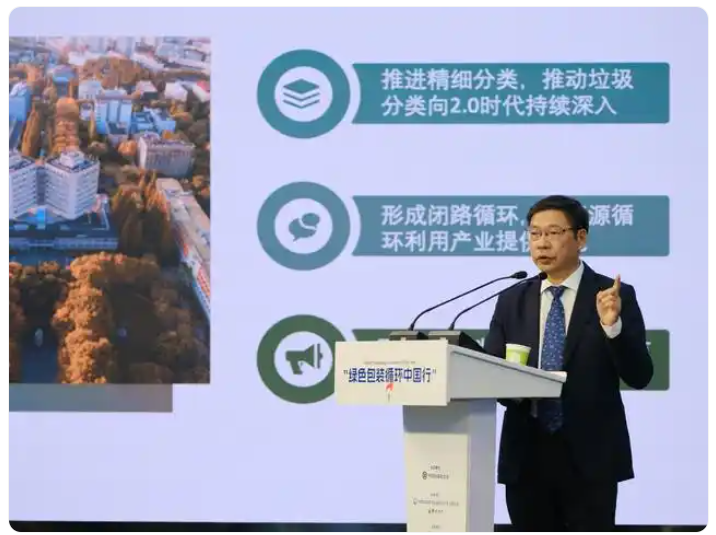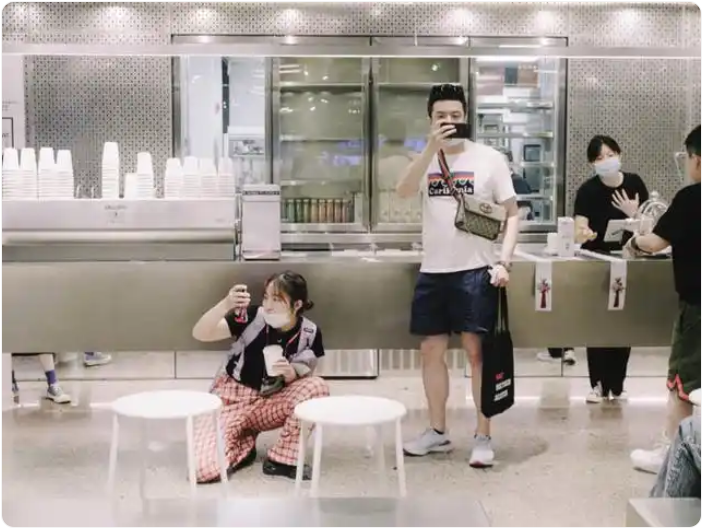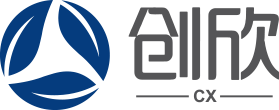Promoting detailed classification and resource treatment of waste, the recycling of disposable paper cups is a demonstration.
Recycling disposable paper cups once and turning them into paper products can achieve a 68% reduction in carbon emissions compared to incineration/landfilling and virgin paper production.
Release time:
Dec 23,2024
Source:
‘Disposable paper cups recycled once and made into paper products can achieve a 68 per cent carbon reduction compared to sending them to incineration/landfill and virgin paper production. The carbon reduction per tonne of paper cups recycled is equivalent to a small petrol passenger car driving 4,481 kilometres less, which is equivalent to planting 6.5 trees.’

On 10 June 2023, Professor Du Huanzheng, director of the Institute of Ecological Civilisation and Circular Economy of Tongji University, released a research report on the construction of a recycling system for post-consumer disposable paper cups. Surfing News Reporter Zhou Pinglang Figure This is the latest data research results mentioned by Professor Du Huanzheng, Director of the Institute of Ecological Civilisation and Circular Economy of Tongji University, when releasing the Research Report on the Construction of Post-consumption Disposable Paper Cup Recycling System, at the launching ceremony of Green Packaging and Recycling in China, which was held at the World Parlour of Magnolia Plaza, Hongkou, Shanghai, on 10th June 2023, which was held in Shanghai, China. The newest data is based on Huhtam's research report on the construction of post-consumer disposable paper cup recycling system. This data is based on a sample of Huhtamaki's paper cup recycling pilot project in China. It is hard to deny that even with the promotion of waste reduction, there are still a large number of occasions in cities where disposable items need to be used, and the possibilities for their recycling and resource utilisation need to be explored. And this study shows that even this small amount of disposable paper cups can give us a glimpse of the huge potential for carbon reduction in everyday urban life. Further, these paper cups, which often appear alongside Netflix coffees and milk teas, are also a breakthrough in the drive to refine waste separation.

Young people linger at an online shop on a summer day in Shanghai, with a paper cup in one hand and a mobile communication device in the other. Surfing News Reporter Zhou Pinglang Figure ‘Garbage classification, right now, is going from 1.0 to 2.0,’ Professor Du Huanzheng mentioned that the rubbish classification done in the past focused on solving the problem of wet and dry separation. In the future, it is necessary to enter the 2.0 version, that is, refined classification, and targeted resourcefulness of the classified products, in categories, steps and scenarios, to build a recycling system for each type of product. For example, the recycling and resourcing of disposable paper cups and disposable plastic packaging boxes need to be promoted step by step. These efforts are both necessary and urgent. Professor Du Huanzheng cited a figure: after the promotion of rubbish classification in Shanghai in 2019, there is still a large amount of disposable packaging consumed from takeaways, express delivery and fast-food restaurants, which account for nearly 60% of the incremental rubbish in Shanghai. There is no doubt that the pilot recycling of paper cups is a good practice.
In addition, this pilot not only fixed-point recycling, but also reflects the reuse after recycling. Professor Du Huanzheng pointed out that recycled products need to have a market, and this kind of recycling and resource utilisation needs to combine economic and social benefits, which can be considered to form personalised customisation, artistic improvement and market landing.

Water-based lamination paper cups from Huhtamaki Pura Group and note pads made from recycled paper from this pilot project. Regarding the exemplary role of this pilot project, Professor Du Huanzheng concluded that it can not only deepen the promotion of waste classification and resource utilisation after classification, but also integrates the closed loop from paper cups to products, which is very meaningful to promote the resource recycling industry; and one point that should not be neglected is that through the recycling of paper cups, it can guide and educate consumers on the concept of green consumption. That is to say, let the consumer used disposable paper cups specifically for recycling, can be recycled, people in the special to put paper cups, green consumption concept will also be formed subconsciously. Of course, this six-month paper cup recycling small-scale pilot, but also reflects the current waste classification, reuse and other aspects of the link, the need to promote all parties to improve and enhance the place.
For example, at present, disposable paper cups are regarded as dry waste, and people do not know that they can be recycled and reused, and there is nowhere to put them out specifically. As a result, at the front end of waste separation, there are problems of unclear classification standards, inadequate infrastructure, and vague consumer perceptions.
At the middle end of the collection and transportation, the problems are mainly the lack of formal recycling bodies, the lack of subsidy mechanism and space guarantee, and the lack of smooth information channels. Professor Du Huanzheng pointed out that this needs to be done through a combination of market roles and public nature. Consideration needs to be given to producer responsibility, consumer responsibility, and government responsibility, and how they should be shared.
As for end-of-pipe reuse, it is mainly due to the high difficulty of large-scale social recycling, the limited level of low-value utilisation, and the lack of environmental benefit measurement. To address this part of the situation, Professor Du Huanzheng believes that the bottleneck lies mainly in scale, and that the problem will be solved naturally if the end of the scale can be formed at the city level.

Disposable paper cups are everywhere in the city in scenes such as partying and entertainment, travelling and relaxing. Surfing news reporter Zhou Pinglang Figure ‘If through this pilot case, the scope is expanded to form a scalability, the economic benefits can be reached. If we can start from Shanghai, expand to the first batch of 46 cities of waste classification, and further expand to 297 prefecture-level cities, the problem of economy will be solved, and the end of the end of the scale of production can also be done.’ Du Huanzheng said. As a result, Du Huanzheng put forward proposals in the report: to include disposable paper cups in the category of recyclables, and to formulate corresponding policies in terms of space security, recycling subsidies, franchises and green procurement, etc.; it is hoped that key scenes such as tourist resorts, catering shops, airports, railway stations and other places where disposable paper cups are used in large quantities and where the management of the area is relatively standardised will be chosen to build pilot demonstration projects to promote the establishment of a sub-scene disposable paper cup recycling system; it is hoped that a green recycling system can be promoted. Recycling system is established; I hope to promote the education of green consumption, so that the public has more knowledge of this, the need for clear rights and responsibilities of the long-term mechanism of disposable paper cup classification, the formation of a social atmosphere of disposable paper cup recycling, driven by the upstream and downstream enterprises in the paper container industry linkage.
‘The government is the leading role, the enterprise is the main body, the public is the main force, the NGO is the main push. Several aspects join together to form a chain connecting the main body of interests.’ Summarising the corresponding model, Professor Du Huanzheng said.
‘There are as many new things as there are old things. I hope that through our small experiment, which turns into a big practice, we can drive the recycling of packaging in China.’ According to Du Huanzheng, the ideal state in the future is that the capacity of the corresponding industry achieves full recycling.

At the launching ceremony of the ‘Green Packaging Recycling Walk in China’, Mr Han Xueshan, Vice President and Executive Secretary General of the China Packaging Federation, passed the torch for the first stop to Jin Junchuan, General Manager of the North Asia Region of Pura Group, Huhtamaki. The ‘Green Packaging Recycling China Walk’ is organised by the China Packaging Federation. The event is organised by the China Packaging Federation, and the torch is passed around the country and to various enterprises to spread the green packaging concept. Each passing of the torch will fulfil the completion of a solution. At the launching ceremony, Han Xueshan, Vice President and Executive Secretary of the China Packaging Federation, passed the torch to Jin Junchuan, General Manager of North Asia Region of Huhtamaki Group, in response to the paper cup recycling pilot project. The event was also attended by Zhao Kai, Executive Vice President of the China Circular Economy Association, and Michael Hoffmann, Vice President of Sustainability and Communications for the Fibre Packaging and Foodservice Business Unit of Huhtamaki Pura Group.
(This article is from Surfing News, for more original information, please download the ‘Surfing News’ APP)
Related News
Quick Links
Products
Email: alice@chuangxinpacking.com
Address: No.88 Jiaxian Avenue, Industrial Park, Huaining County, Anqing City, Anhui Province
You can contact us through the following methods, or click online message to leave us your needs or suggestions.
COPYRIGHT © 2024 Anhui Chuangxin Environmental Protection Technology Co., Ltd. All Rights Reserved. Powered by: www.300.cn | SEO


